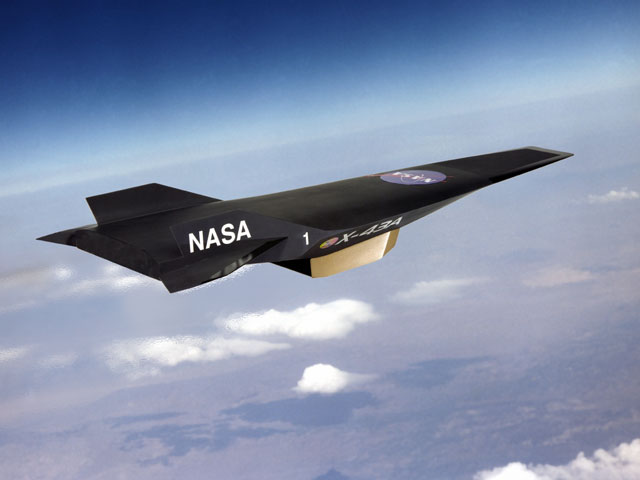Explanation: Using oxygen from the air itself, a NASA experimental jet propelled itself past Mach 7 in the atmosphere above the Pacific Ocean this weekend. The small automated X-43A Hyper-X craft was dropped from a huge converted B-52 bomber and then accelerated by a standard Pegasus rocket. At Mach 5, five time the speed of sound, the X-43A separated and the novel scramjet kicked in. Atmospheric oxygen was then scooped up, combined with onboard hydrogen, and combusted in flight to propel the X-43A to record air speeds during maneuvers over the next 10 minutes. Engines of ramjet design have been suggested as a satellite launch method without heavy fuel tanks and even romanticized for interstellar space travel. The previously acknowledged air-speed record for jet-powered flight was Mach 3.3 for the decommissioned SR-71. Re-entering space rockets can start as high as Mach 36 before the atmosphere decelerates them. The X-43A, depicted in the artist's illustration above, might well propel itself past Mach 10 in future tests.
1999 2000 2001 2002 2003 2004 2005 2006 2007 2008 2009 2010 2011 2012 2013 2014 2015 2016 2017 2018 2019 2020 2021 2022 2023 2024 2025 |
Yanvar' Fevral' Mart Aprel' Mai Iyun' Iyul' Avgust Sentyabr' Oktyabr' Noyabr' Dekabr' |
NASA Web Site Statements, Warnings, and Disclaimers
NASA Official: Jay Norris. Specific rights apply.
A service of: LHEA at NASA / GSFC
& Michigan Tech. U.
|
Publikacii s klyuchevymi slovami:
chislo Maha
Publikacii so slovami: chislo Maha | |
|
Sm. takzhe:
| |
